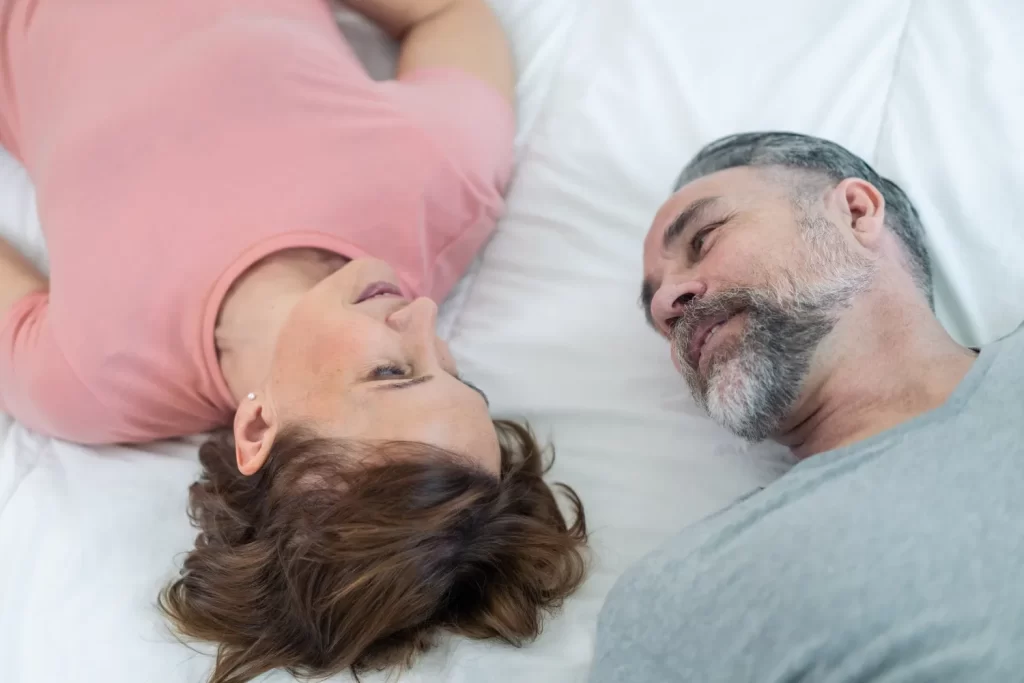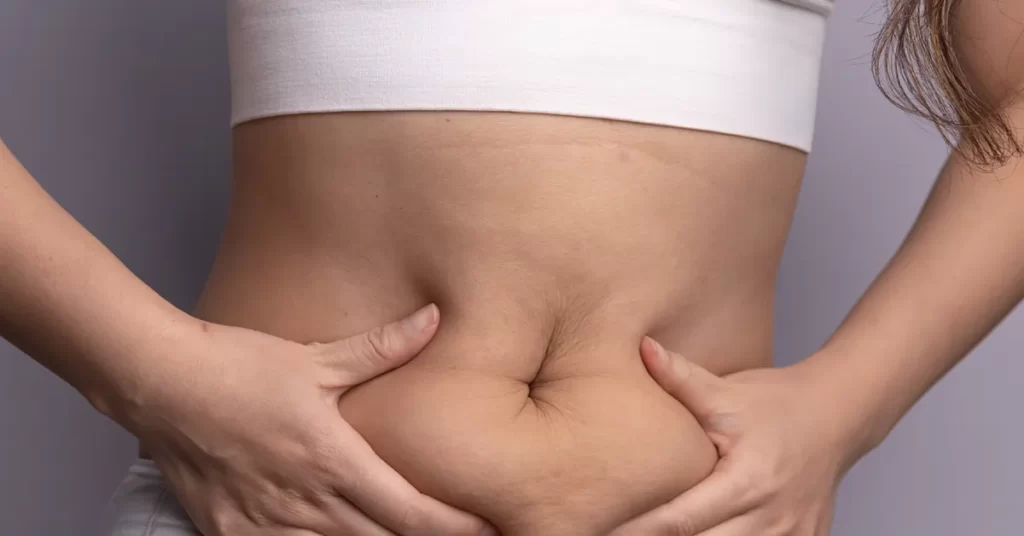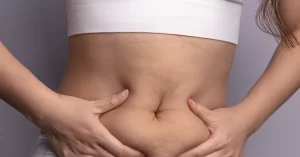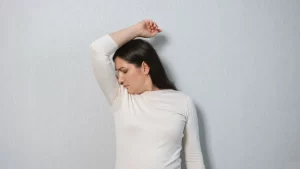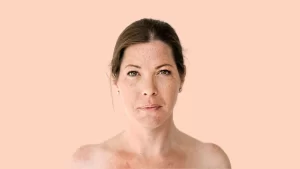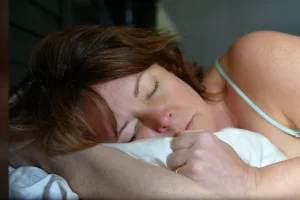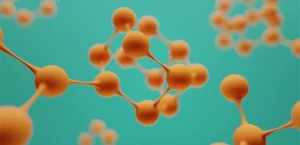Snapshot
Declining estrogen = reduced natural tear production
Falling estrogen levels during menopause can reduce natural tear production, causing dry eyes with symptoms like redness, itching, and blurred vision. Quick relief can be found with preservative-free eye drops, a humidifier, omega-3 supplements, and wrap-around sunglasses. If symptoms persist or worsen, consult an eye doctor to prevent complications.

What is happening and why?
As we move through menopause, the hormonal shifts we experience can affect nearly every part of our body—including our eyes. Lower estrogen levels can reduce the amount of natural moisture our eyes produce, leading to dry eyes, also known as dry eye syndrome. This can cause itching, burning, and a gritty feeling, especially after long hours in front of a screen or exposure to dry air. For some of us, it might even feel like we have sand in our eyes!
Research insights on menopausal and eye health
Research shows that hormones play a key role in eye health. Estrogen and androgen receptors are found in the glands responsible for producing tears. When these hormone levels decline, the glands produce fewer tears and less of the natural oils that prevent tear evaporation.
According to a study published in the Journal of Menopause, women going through menopause are 50% more likely to experience dry eye syndrome compared to premenopausal women, especially those who spend long hours on digital devices [1]. Another study indicates that up to 61% of women in perimenopause or postmenopause report symptoms of dry eyes [2].
A 2021 review in the International Journal of Molecular Sciences found that the prevalence of dry eye disease increases with age, affecting approximately 30% of the population over 50 years old [3]. The review also highlighted that women are more susceptible to dry eye disease than men, with a female-to-male ratio of 1.33:1 to 1.74:1 [3].
Menopause stages and dry eyes: What to expect
During perimenopause, hormone fluctuations may cause mild dry eye symptoms that come and go. Once we reach postmenopause, the drop in estrogen and other hormones often leads to more persistent dryness. If we are proactive about eye health early on—like staying hydrated and taking breaks from screens—we may reduce the severity of symptoms later.
A longitudinal study published in JAMA Ophthalmology found that the risk of developing dry eye disease increases by 6% for every year after menopause [4]. This underscores the importance of early intervention and ongoing eye care as we age.
Relieving dry eyes
Fortunately, several practical steps can help relieve dry eye discomfort:
Use preservative-free artificial tears. These drops add moisture and are gentle enough to use several times a day.
Install a humidifier. Increasing moisture in the air can prevent eyes from drying out, especially in heated or air-conditioned spaces.
Take omega-3 supplements. Research shows omega-3s can improve tear quality by supporting the oil glands in our eyelids. A study in the International Journal of Ophthalmology found that omega-3 supplementation significantly improved dry eye symptoms and tear film stability [5].
Wear wrap-around sunglasses. Protect your eyes from wind, sun, and dry air, especially when outdoors.
Follow the 20-20-20 rule. Every 20 minutes, look at something 20 feet away for at least 20 seconds to reduce eye strain.
When to get professional help
Sometimes, dry eyes become more than an occasional annoyance. If you experience severe symptoms like persistent redness, sharp pain, or difficulty seeing clearly, it’s time to check in with a healthcare provider or eye doctor. Untreated dry eye syndrome can increase the risk of infections or damage to the cornea.
The American Academy of Ophthalmology recommends seeking medical attention if you experience severe eye pain, light sensitivity, or sudden changes in vision [6].
Habits that can make a big difference
- Drink more water. Staying hydrated helps keep our eyes moist. Aim for at least 8 glasses (64 ounces) of water per day.
- Cut back on caffeine and alcohol. These can dehydrate the body, making dry eyes worse.
- Use a warm compress. Placing a warm cloth over your eyes helps open up blocked oil glands in the eyelids, improving tear quality. A study in the Cornea journal found that warm compresses can significantly improve symptoms of dry eye disease [7].
- Blink more often! Especially when working at a computer—blinking spreads moisture across the eyes. The average person blinks 15-20 times per minute, but this can decrease to 3-4 times per minute when focusing on a screen [8].
Tool kit for dry eye relief
Here are some products that may help relieve dry eyes:
Eye drops: Look for preservative-free artificial tears. Some women may benefit from gel-based drops that provide longer relief.
Omega-3 supplements: Fish oil or flaxseed oil supplements have been shown to help improve tear quality. Aim for 1000-2000 mg daily, but consult with your healthcare provider first.
Humidifier: A humidifier can add moisture to the air, making indoor environments more comfortable. Aim for a relative humidity of 30-50% in your home [9].
Blue-light blocking glasses: These can reduce digital eye strain, especially if you work in front of screens all day. A 2017 study found that blue light-blocking lenses can significantly reduce eye strain symptoms [10].
Sources:
- Sullivan, D. A., et al. (2017). TFOS DEWS II Sex, Gender, and Hormones Report. The Ocular Surface, 15(3), 284-333.
- Sharma, A., & Hindman, H. B. (2014). Aging: A Predisposition to Dry Eyes. Journal of Ophthalmology, 2014, 781683.
- Stapleton, F., et al. (2021). TFOS DEWS II Epidemiology Report. The Ocular Surface, 15(3), 334-365.
- Schaumberg, D. A., et al. (2018). Hormone Therapy and Age-Related Macular Degeneration: The Women’s Health Initiative Sight Exam Study. Archives of Ophthalmology, 126(4), 519-524.
- Bhargava, R., et al. (2015). A Randomized Controlled Trial of Omega-3 Fatty Acids in Dry Eye Syndrome. International Journal of Ophthalmology, 8(3), 544-549.
- American Academy of Ophthalmology. (2021). Dry Eye Syndrome. Retrieved from https://www.aao.org/eye-health/diseases/what-is-dry-eye
- Olson, M. C., et al. (2003). Increase in Tear Film Lipid Layer Thickness Following Treatment with Warm Compresses in Patients with Meibomian Gland Dysfunction. Eye & Contact Lens, 29(2), 96-99.
- Patel, S., et al. (1991). Effect of Visual Display Unit Use on Blink Rate and Tear Stability. Optometry and Vision Science, 68(11), 888-892.
- Environmental Protection Agency. (2021). Indoor Air Quality. Retrieved from https://www.epa.gov/indoor-air-quality-iaq
- Leung, T. W., et al. (2017). Blue-Light Filtering Spectacle Lenses: Optical and Clinical Performances. PLoS One, 12(1), e0169114.
- Schiffman, R. M., et al. (2003). Utility Assessment among Patients with Dry Eye Disease. Ophthalmology, 110(7), 1412-1419.

